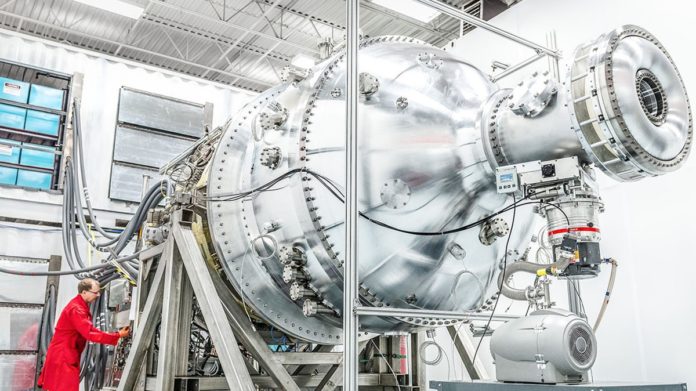Nuclear power has a bad reputation, but with the need to unwed ourselves from fossil fuels and quickly develop a sustainable, clean alternative, the option remains on the table. Nuclear fission is the conventional method used in existing nuclear power plants, but a safer, cheaper, and more efficient approach is with fusion, and several companies are on the trail including the Canadian group, General Fusion.
Fission is the process of splitting the heavier nuclei of atoms in elements like plutonium and uranium into smaller nuclei, releasing huge amounts of energy. The reliance on heavier elements in this process results in radioactive waste, a dangerous byproduct that remains challenging with regards to storage and disposal.
Fusion is the opposite, and it takes inspiration from the same process that powers stars. In this process, massive amounts of heat and gravitational pressure compress the nuclei of certain atoms into heavier nuclei, releasing vast amounts of energy. The main byproduct of fusion reactors is helium, and the nuclear waste they produce is relatively benign and short-lived. Even better, there is no risk of the dreaded meltdown with fusion since any disturbance of the machine will simply cause the reaction to stop.
Scientists back on Earth are challenged with replicating this process, though it has already been demonstrated on a small scale. Engineers must now figure out how to scale up the fusion process to commercial proportions in an efficient, safe, economical, and environmentally-friendly manner.
The problem is that developing fusion has been an incredibly expensive, decades-long process riddled with technical hurdles yet to be overcome. If successfully mastered, this cheap, safe, nuclear waste and carbon-free technology may become a $1-trillion industry that could “literally save the planet.”
General Fusion is one of only a handful of companies working to make this technology a reality, and their strategy has been pegged as a likely winner by some big names. Investors including Bill Gates, Jeff Bezos, and Shopify have collectively amplified the company’s funding to around $200 million, signalling a great deal of confidence in the company’s approach.
General’s approach is with Magnetized Target Fusion and builds upon the work that has been ongoing since the 1970s. The method involves injecting hydrogen into a molten lead-lithium sphere that is rapidly compressed, superheating the fuel to a temperature that creates fusion conditions. The hydrogen fuel is created by separating hydrogen from water through electrolysis and further separating out the heavier hydrogen, which contains an extra neutron.
What sets General apart is that they have better materials that allow for stronger and faster compression than what was possible in the ’70s, and they have also designed their machines to improve the synchronization of the pistons as they fire. Put together, General’s advancements have brought us much closer to developing fusion conditions at scale.
Prototypes exist and testing is underway, but we are still years away from completion. Despite the considerable funding to date, General still needs to raise hundreds of millions more within the next five years to prove the technology’s commercial viability.
“We’re not trying to prove that fusion works,” said Mowry to the Globe and Mail. “Fusion does work. We’re trying to prove our approach is something that is practical and can be translated into an economically competitive power plant with a machine that is durable, can last for decades and have economics that can compete with coal for power production.”
Other companies on the trail of mastering fusion include the MIT spinoff, Commonwealth Fusion Systems, whose technology’s underlying scientific principles were recently validated by peer review.
Further accelerating the charge is Joe Biden’s $2-trillion climate plan, which lists advanced nuclear technologies as part of his long-term strategy to make the US energy supply carbon-free come 2035. In Canada, the federal government invested $20 million in the nuclear industry last year to further the push towards net-zero greenhouse gas emissions by 2050.
“The world is pivoting toward fusion as the necessary complement to other technologies which, collectively, will enable the carbon-free energy future we all need,” said CEO Christofer Mowry in a press release.
“The success of our financing is further evidence that the global stakeholders in this endeavour are leaning into this challenge with action.”





































